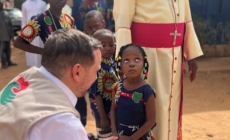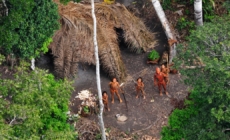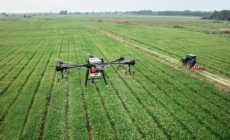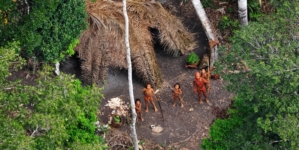-
Here’s what federal workers should know about getting retroactive pay - 10 mins ago
-
Owner’s PSA Over Heartbreaking Reason Dog Dies in Her Arms Waiting for Vet - 42 mins ago
-
Hungary Helps Program in Chad Achieves Tangible Results - 44 mins ago
-
Demi Moore says Tom Cruise was ’embarrassed’ by her pregnancy on set - about 1 hour ago
-
Budapest to Host Landmark Textile Art Exhibition - about 1 hour ago
-
Green-Card Holder Denied Reentry to US Over Past Arrest - about 1 hour ago
-
Olivia Moultrie Scores 2 Goals in 3-1 USWNT Victory Over Portugal - about 1 hour ago
-
New report details threats facing uncontacted peoples - about 1 hour ago
-
Danube Fish Monitoring Reveals Healthy, Diverse Populations and Rare Species - 2 hours ago
-
WWE Veteran Moves Into New Exciting Role: Report - 2 hours ago
Why the survival of uncontacted Indigenous peoples is under growing threat
“If we don’t support the fight for their rainforest, my uncontacted relatives will die,” an unnamed man of the Hongana Manyawa tribe in Indonesia was quoted as saying in the report.
“The rainforest is everything, it’s their heart and life. My parents and siblings are in the rainforest and without support they will die,” he added.
The tribe lives on Indonesia’s Halmahera Island, where nickel for electric-vehicle batteries is being mined.
Survival says it relies on its international network of researchers and accounts from the contacted Indigenous people.
Resource extraction is by far the single biggest threat to the uncontacted population, the report said. Survival says around 96 percent of the groups face threats from extractive industries like mining.
Thirty-eight of the uncontacted groups “face annihilation” by infrastructure projects like roads and railways, it said.
Survival says criminal gangs threaten about a third of the groups and missionaries who are “bankrolled by multi-million dollar evangelical organizations” to track and convert people to Christianity threaten about one in six.
Another rising threat is social media influencers seeking to make the “first contact” for content and advertising, the charity said.
“Indigenous people have become this spectacle. They’re here to be consumed by global audiences,” Michael Rivera, an anthropologist at the University of Hong Kong, told NBC News.
“This is reproducing a sort of racial hierarchy that is positioning influencers, which tend not to be Indigenous people, [at the top.]”
Any activity on Indigenous land requires free, prior, and informed consent, as mandated by international law; however, this is not possible when the groups are not contacted. And national enforcement varies.
In one example in April, Indian police arrested an American YouTuber who visited an off-limits island in the Indian Ocean and left an offering of a Diet Coke can in an attempt to make contact with the reclusive Sentinelese tribe that is known to shoot at outsiders with bows and arrows.
An American missionary was killed in 2018 after trying to make contact with the tribe.
“The solution is obvious: industries and governments must act now to halt this continuing colonization so that uncontacted peoples can live freely as they choose,” Caroline Pearce, director of Survival International, said in the report.
Uncontacted people usually receive little attention from the governments around them, which critics say is because they don’t vote and the land they hold is often resource-rich and ripe for exploitation.
Survival says the uncontacted people reject contact as a “deliberate choice,” which is “often rooted in memories of devastating past contact and invasion, which brought violence, epidemics, and death.”
The report called for a global no-contact policy and urged private companies to ensure their supply chains are free of material sourced from land inhabited by the Indigenous groups.
“People think electric cars are a green alternative,” said Fiona Watson, Survival’s research and advocacy director, “but mining companies are operating on the land of uncontacted peoples and posing enormous threats.”
Source link
































